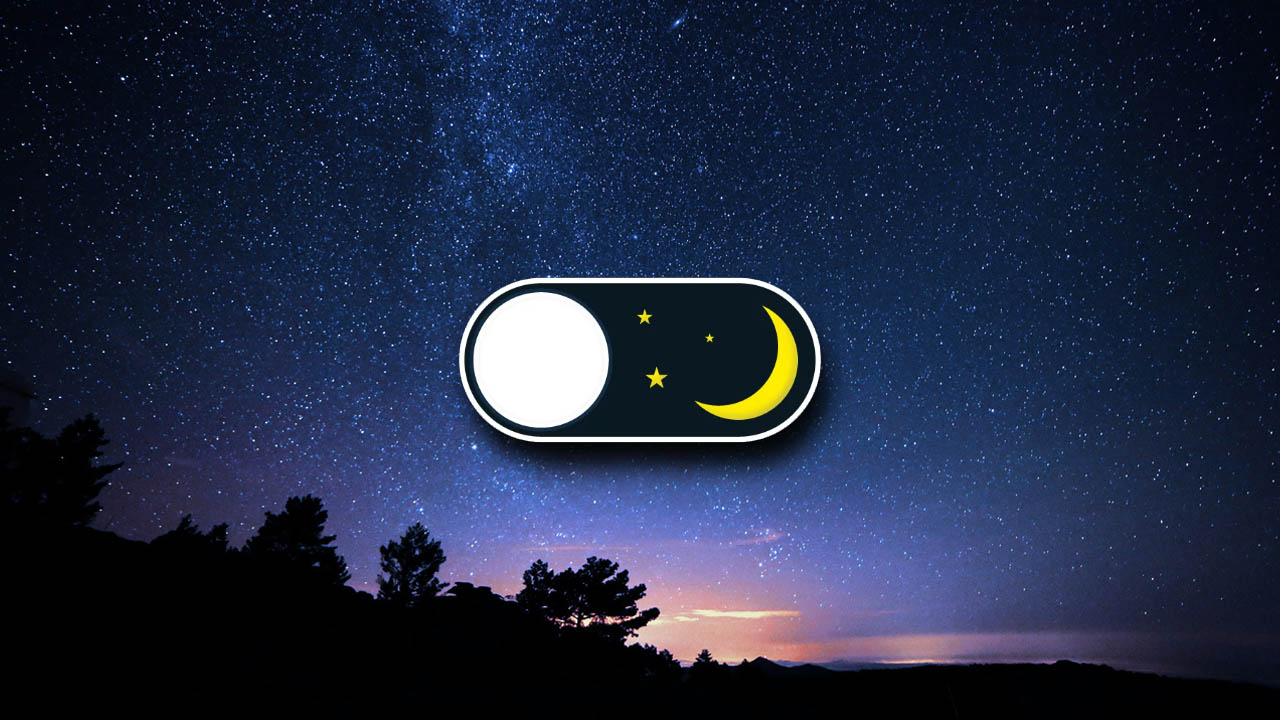Implementing Dark Mode in Your Web Application
 akash javali
akash javali
Dark mode has become a popular feature in modern web applications. It provides a sleek and stylish look while reducing eye strain, especially in low-light conditions. In this blog post, I will share my experience of implementing dark mode in a recent project, the steps to achieve it, and the pros and cons of incorporating this feature.
Implementing Dark Mode in My Portfolio Project
When I decided to revamp my portfolio, I wanted to include a dark mode option to enhance the user experience. The goal was to allow visitors to switch between light and dark themes seamlessly. Here's a detailed walkthrough of the process.
Step 1: Designing the Dark Mode
The first step was to design the dark mode theme. This involved selecting appropriate colors that would provide good contrast and readability. Tools like Figma and Adobe XD were helpful in visualizing the dark mode theme. The primary focus was on background, text, and accent colors.
Step 2: CSS Variables
To manage the theme switch efficiently, I used CSS variables. This approach allows you to define colors once and reuse them throughout your stylesheets. Here’s an example of how I set up my CSS variables:
:root {
--background-color: #ffffff;
--text-color: #000000;
--accent-color: #007bff;
}
[data-theme="dark"] {
--background-color: #121212;
--text-color: #e0e0e0;
--accent-color: #bb86fc;
}
Step 3: JavaScript for Theme Switching
To enable users to toggle between light and dark modes, I added a switch button and wrote JavaScript to handle the theme change. Here’s a simplified version of the code:
<button id="theme-toggle">Toggle Dark Mode</button>
const toggleButton = document.getElementById('theme-toggle');
const currentTheme = localStorage.getItem('theme') || 'light';
document.documentElement.setAttribute('data-theme', currentTheme);
toggleButton.addEventListener('click', () => {
let theme = document.documentElement.getAttribute('data-theme') === 'light' ? 'dark' : 'light';
document.documentElement.setAttribute('data-theme', theme);
localStorage.setItem('theme', theme);
});
Step 4: Testing and Adjustments
After implementing the dark mode, thorough testing was necessary to ensure that all elements were correctly styled and readable. This involved testing across different devices and screen sizes. Adjustments were made based on user feedback to fine-tune the theme.
Pros of Implementing Dark Mode
User Preference: Many users prefer dark mode, especially for nighttime use. Offering dark mode can improve user satisfaction and retention.
Reduced Eye Strain: Dark mode can reduce eye strain and fatigue, particularly in low-light environments.
Battery Saving: On devices with OLED screens, dark mode can save battery life as black pixels consume less power.
Modern Look: Dark mode provides a sleek and modern aesthetic that can enhance the overall appeal of your web application.
Cons of Implementing Dark Mode
Increased Development Time: Implementing and maintaining a dark mode requires additional design and development effort.
Accessibility Issues: Poorly implemented dark modes can cause readability issues for some users, especially those with visual impairments.
Consistency Challenges: Ensuring consistency across different browsers and devices can be challenging and may require extensive testing and adjustments.
Performance Overhead: The added JavaScript for theme switching can introduce a slight performance overhead, although minimal with proper optimization.
Conclusion
Implementing dark mode in your web application can significantly enhance user experience and provide a modern, visually appealing interface. By following the steps outlined above and considering the pros and cons, you can successfully integrate dark mode into your project. Remember to test thoroughly and gather user feedback to ensure the best possible experience for your users. Happy coding!
Subscribe to my newsletter
Read articles from akash javali directly inside your inbox. Subscribe to the newsletter, and don't miss out.
Written by

akash javali
akash javali
A passionate 'Web Developer' with a Master's degree in Electronics and Communication Engineering who chose passion as a career. I like to keep it simple. My goals are to focus on typography, and content and convey the message that you want to send. Well-organized person, problem solver, & currently a 'Senior Software Engineer' at an IT firm for the past few years. I enjoy traveling, watching TV series & movies, hitting the gym, or online gaming.